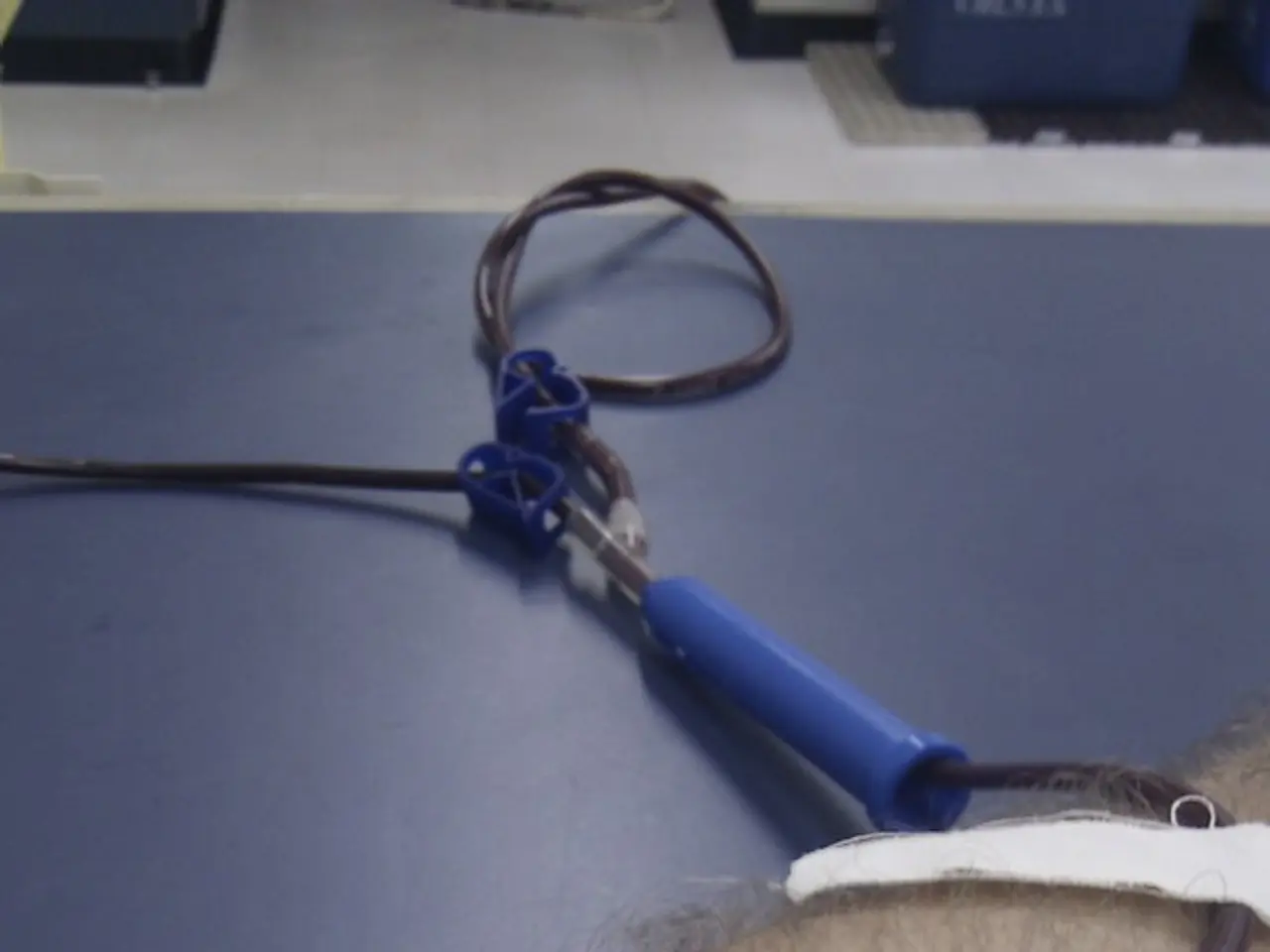Enlarged, blue varicose veins signal a potential concern
Varicose veins are a common medical condition that can affect the legs, causing symptoms such as sore, achy, or throbbing legs, skin ulcers, swollen legs, ankles, or feet, and darkened or hardened skin areas. If left untreated, these veins can lead to more serious complications such as blood clots, which can travel through the body and increase the risk of pulmonary embolism, a life-threatening condition.
Fortunately, there are several minimally invasive treatment options available for varicose veins. These treatments are designed to close or remove the damaged veins, thereby improving vascular health by preventing blood from pooling and reducing venous pressure in the legs.
One such treatment is sclerotherapy. This procedure involves injecting a solution into the varicose veins, causing them to collapse and be absorbed, reducing visible bulging veins and improving symptoms. Sclerotherapy is quick and has minimal downtime.
Another option is endovenous laser ablation (EVLA), which uses a laser fiber inserted into the vein under ultrasound guidance to heat and close the vein. This procedure is minimally invasive, usually takes less than 30 minutes, causes little pain, and has a quick recovery.
Radiofrequency ablation (RFA) is similar to EVLA but uses radiofrequency energy to heat and seal the affected vein. It is also minimally invasive, typically performed under local anesthesia, and allows rapid return to daily activities. RFA is especially effective for veins that are straight and located in the thigh.
A relatively new treatment option is focused ultrasound therapy. This noninvasive method uses targeted ultrasound waves to thermally ablate the varicose veins without catheters or surgery. It may reduce risks such as nerve damage and phlebitis and requires no anesthesia.
By closing or removing incompetent veins, these treatments improve overall vascular health, alleviate symptoms such as pain, swelling, and skin changes, and decrease the risk of complications like venous ulcers or thrombosis. Blood circulation improves as blood is rerouted through healthy veins, promoting better vascular function.
It's important to note that all large varicose veins should be evaluated by a physician. Varicose veins are often associated with family history, standing for long periods, being overweight, or pregnancy. Women should not wait to be evaluated for varicose vein treatment, even after having children, as future pregnancies may make them worse.
Preventing or reducing varicose veins can improve vascular health and keep legs looking younger. Simple measures such as pumping calf muscles while seated, wearing knee-high compression socks, and avoiding prolonged standing or sitting can help prevent varicose veins.
In summary, minimally invasive treatments for varicose veins are effective at eliminating problematic veins with limited downtime and low risk, thereby positively impacting vascular health by restoring efficient blood flow and reducing vein-related symptoms. If you experience any of the symptoms associated with varicose veins, it's essential to seek medical advice from a healthcare professional.
- The field of medicine offers several advanced therapies and treatments for a wide range of health issues, including treatments for medical conditions like varicose veins.
- Technology plays a crucial role in health and wellness, with minimally invasive procedures like sclerotherapy, endovenous laser ablation (EVLA), radiofrequency ablation (RFA), and focused ultrasound therapy being utilized for the treatment of varicose veins.
- Education about the importance of maintaining good cardiovascular health and addressing medical conditions like varicose veins before they become more severe is essential.
- Workplace-wellness programs can encourage regular fitness and exercise, eye-health screenings, skin-care routine, and mental-health services, contributing to overall physical and mental well-being.
- Nutrition plays an important role in maintaining good health, particularly cardiovascular health, and can help manage conditions like varicose veins or respiratory conditions.
- Neglecting treatment for medical conditions like varicose veins can lead to more severe complications, such as blood clots and the risk of pulmonary embolism, which can be life-threatening.
- By seeking treatment for medical conditions like varicose veins, individuals can alleviate symptoms like pain, swelling, and skin changes, improve overall vascular health, and decrease the risk of complications like venous ulcers or thrombosis.
- Regular exercise, proper nutrition, and preventive measures, such as pumping calf muscles while seated or wearing compression socks, can help reduce the risk of developing varicose veins, contribute to better vascular function, and keep one's legs looking healthier.




